Pop Hill Ski Jump
Jeff M. Sauve
As the son of the chemistry department chair, Peter Agre spent many hours as a child in the 1950s playing on the St. Olaf College campus, including at the Pop Hill ski jump. Years later, Agre recounted those experiences: “In summer, we climbed the rickety old ski jump that once stood at the top of Thorson Hill and would let fly our basketball. It reached high velocity and often bounced all the way across Greenvale, fortunately never hitting any of the astonished farmers as they drove their trucks into town.”
The 25-foot wooden ski jump was dedicated on January 14, 1911, making St. Olaf one of the first U.S. colleges to offer ski jumping. By January 1913, an upgraded 72-foot metal scaffold was erected and named in honor of Anders Haugen, the 1910 U.S. national ski jumping champion and world record holder.
Annual tourneys attracted the best amateur skiers from across the northwestern United States and Norway, garnering 1,500 or more spectators. In 1930, the Haugen Ski Jump was modified essentially for one student, Lloyd Ellingson, who became national intercollegiate ski champion. He was also a member of the 1932 Olympic ski team.
Officially the ski jump record of 90 feet was set by Wilbur Najjar, a skier from the University of Minnesota Duluth. Another skier from the University of Minnesota Duluth, Joe Nowak, leaped 94 feet, but landed in the crowd and fell, so his jump did not reach the record book.
One of the greatest campus hoaxes took place in 1946 at the groundbreaking of Thorson Hall. Officials and spectators were horrified to see a body hurtle from the top of the slide and plunk to the ground below. Pandemonium ensued as the crowd rushed to the scene. An ambulance was summoned and arrived quickly with siren screaming. All this help was for a dummy, fashioned and tossed off the slide by prankster students.
By February 1961, college officials had the venerable wooden ski jump permanently removed; it was determined to be potentially unsafe for neighborhood children. Disuse due to mild winters in the previous several years contributed to its demise. In addition, development of the athletic area below the jump had changed the grading of the landing slope’s outrun, making it unusable for ski jumping.
Agre must have learned a few things from launching basketballs down the slide—he was awarded the 2003 Nobel Prize in chemistry.
Thorson Hall Groundbreaking Ceremony with Professor Paul G. Schmidt, March 26, 1946
One of the greatest campus hoaxes took place in 1946 at the groundbreaking of Thorson Hall. Officials and spectators were horrified to see a body hurtle from the top of the slide and plunk to the ground below. An ambulance was summoned, and it arrived quickly with siren screaming. All this help was for a dummy, fashioned and tossed off the slide by prankster students. Source St. Olaf College Archives
Popping off on Pop Hill Ski Jump.
Early ski jumping tourney held at St. Olaf College, ca. 1913. Source St. Olaf College Archives, Gerhard Peterson Photo Collection
King of the Hill
Lloyd Ellingson, member of the 1932 U.S. Olympic Ski Team. Source St. Olaf College Archives
Original Wooden Ski Jump, a.k.a. Haugen Ski Jump, ca. 1913.
The ski jump was named after Anders Haugen (October 24, 1888 – April 14, 1984), an American ski jumper who won four national ski jumping championships. He was the first American to win an Olympic medal for ski jumping. Source St. Olaf College Archives, Edolph A Larson Photo Collection
Current View: Old Thorson Hill Ski Jump
For the last 50 years, this hill has served as the site for the local Easter egg roll. Creator Melanie Jones, April 15, 2015
Current View: Old Thorson Hill Ski-Jump
For years this hill served as a winter playground for St. Olaf students. Today, it is the home of the local Easter egg roll. Creator Melanie Jones, April 15, 2015
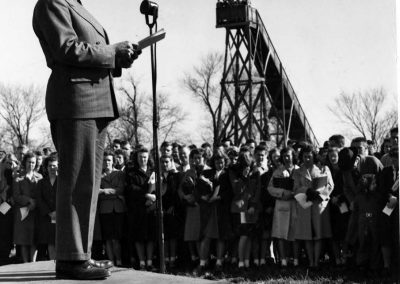
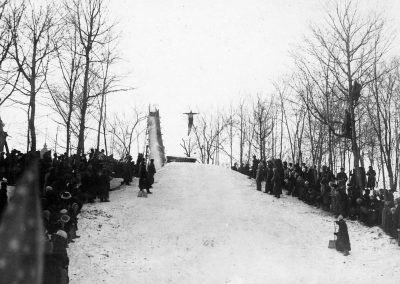
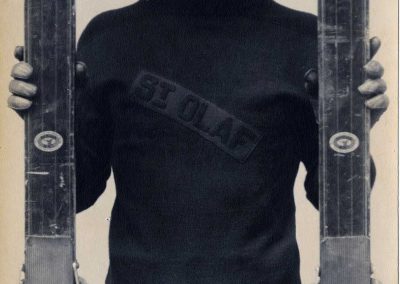
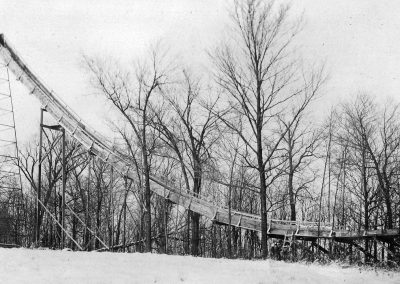


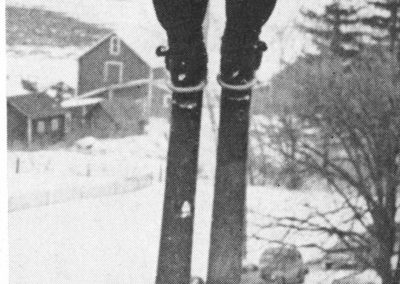
Recent Comments